Liquor district with a deep bakumatsu history.
audio tourism guides for "Fushimi Momoyama" area.
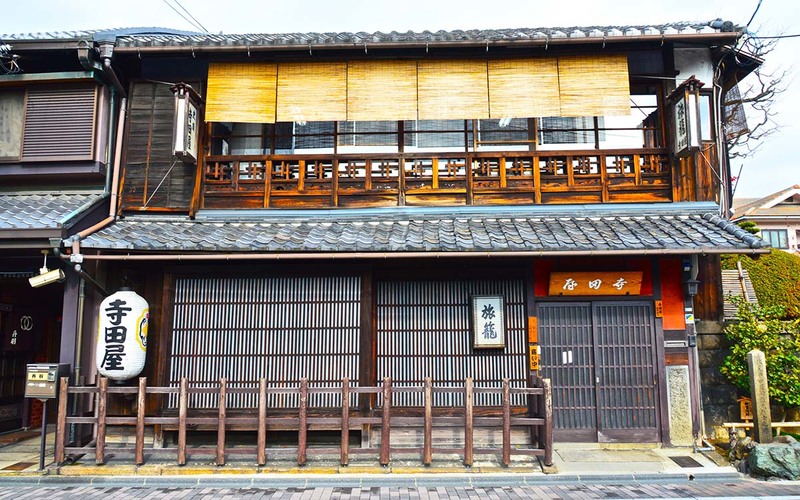
Fushimi Momoyama Area
Kyoto Fushimi is a castle town built by Toyotomi Hideyoshi. Fushimi is not only one of Japan's most renowned liquor districts, but also a place where the Edo period's patriot Sakamoto Ryoma was active. The scenic landscape was portrayed in Manyoshu, Japan's oldest existing collection of poetry, and it was a popular location for the noble class to have their villas during the Heian period. Many other historic events also took place in this region, such as the Insei War, Onin War, Teradaya incident, and the Battle of Toba-Fushimi. The name "Fushimi" comes from the word for fresh water or "fushimizu", and the Gokonomiya Shrine is famous for its fresh spring water. Brewing became a growing industry here due to fresh water, and Fushimi castle's outer moat became an ideal transportation route.
Old breweries and houses can be found in the town of Fushimi, and you can see many unique documents regarding brewing at the Gekkeikan Okura Sake Museum. In addition, "Teradaya", the famous inn frequented by Sakamoto Ryoma still stands today.
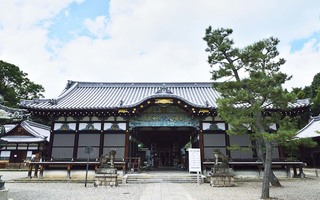
A Gokonomiya Shrine
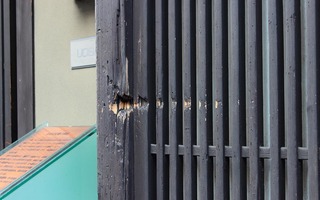
B Bullet mark from the Battle of Toba-Fushimi
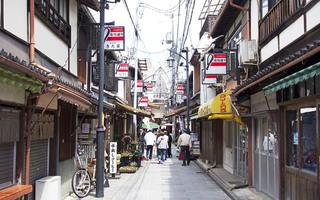
C Ryoma-dori Shotengai

D Teradaya
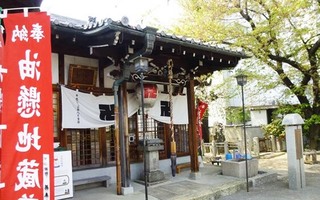
E Saigan-ji Temple (Aburakake Jizo)
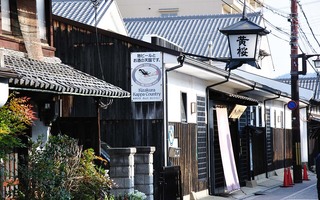
F Kizakura Kappa Country
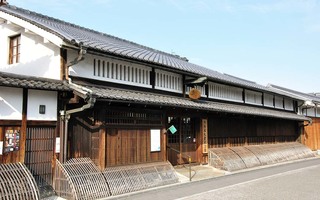
G Gekkeikan Okura Sake Museum
H Jyukkoku-bune, Sanjyukkoku-bune
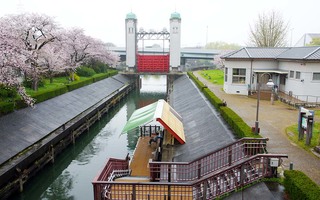
I Misu Komon (Lock Gate)
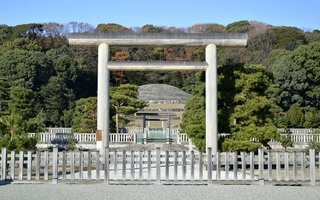
J Imperial Tomb of Fushimi Momyama(Fushimi Momoyamaryo )
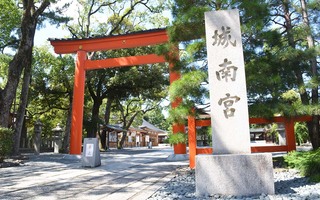
K Jonangu
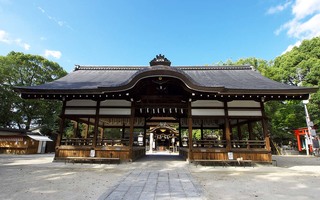
L Fujinomori-jinja Shrine
A
Gokonomiya Shrine

Gokonomiya Shrine is a famous shrine to pray for safe childbirth, and it is also where Goko-sui, one of seven famous waters of Fushimi, springs. Goko-sui was also chosen as one of "100 famous Japanese waters", and Fushimi's sake-brewing water shares the same water source, so there are many visitors who have come to draw water from the shrine in recent years.
According to the shrine's historic records, a very fragrant water sprung out in the year 862, and many sick people recovered after they drank the water. Emperor Seiwa who heard this story gave the shrine the name Gokonomiya Shrine, or "Shrine of fragrant water." The main deity is the Empress Jingu
, who is widely worshiped as Japan's First Guardian Goddess for Safe Child Birth, and has been worshipped for a long time. In addition to safe child birth, other worship includes prayer for child growth and protection from evil.
Inside the calm shrine, there is the Benten-sha shrine that worships the Benzaiten who brings good financial luck and improvement of various skills, and Matsuo-sha shrine that worships the god of liquor. Gokonomiya Shrine’s main hall is the most picturesque during fall. The main gate is the remains of the Ohtemon gate of Fushimi castle erected by Toyotomi Hideyoshi in 1594, and the main hall was recently renovated to revive its vivid colors.
B
Bullet mark from the Battle of Toba-Fushimi

The Battle of Toba-Fushimi started in January 1868, or the fourth year of the Keio period at the end of the Tokugawa shogunate, between the Shogunate Army and the new ruling government’s army of the Satcho Alliance. After the Imperial rule was restored, the 15th shogun of the Tokugawa family, Tokugawa Yoshinobu, was ordered by court to return all of its power and the shogunate territories. The Shogunate Army, furious with the decision, attacked Kyoto. The new government army confronts them at Toba Fushimi, which led to a major urban warfare in the city of Fushimi where the new government army was positioned in the north, and the Aizu clan and Shinzengumi campaign of the Shogunate Army was positioned in the south. As a result, the Shogunate Army lost and retreated to Osaka. Due to the war, the southern half of Fushimi was destroyed and burnt down, but Kyoto's restaurant "Uosaburo" evaded damage, and a bullet mark from the battle still remains today on its front gate.
C
Ryoma-dori Shotengai

Ryoma-dori Shotengai shopping street is to the north of the northern entrance of the Horai-bashi Bridge, located just east of Teradaya; famous for Sakamoto Ryoma. It's Kyomachiya-style exterior and retro atmosphere is popular among visitors. Locals and tourists love feeling the reminiscence of an old Kyoto cityscape that the Bakumatsu patriots frequented, such as the stone pavement, gaslight style streetlights, and the Kyomachiya-style buildings.
It is said that the origin of this shopping street was the red-light district of Chushojima when Toyotomi Hideyoshi built Fushimi castle in 1594, and the storeowners collaborated with the workers of the red-light district to collect assortments of kimonos and everyday goods, which gradually developed this area. Recently, in 1994, or the sixth year of the Heisei period, the former South Naya-cho Shopping District was renamed as the current "Ryoma-dori Shotengai" and established an association to promote the shopping street. In 1996, they created a development plan of the "Bakumatsu Corridor", which included renovation and restoration projects to convert the streets into stone pavement, unifying the designs of the store signs to resemble the style of the Edo period, and changing the store exteriors to a Kyomachiya-style. With the guidance of local experts, these efforts led to the beautiful scenery of this shopping street today.
D
Teradaya

Teradaya was an inn with a dock for boat owners, and it is famous as the location of two historic incidents that happened towards the end of the Tokugawa shogunate. The first was in April 1862 when Shimazu Hisamitsu, the father of the leader of the Satsuma clan raided the extremists of its clan; this is the "Teradaya Incident". The second was in January 1866 when Sakamoto Ryoma was attacked by the officials of the Fushimi magistrate's office after visiting the Satcho Alliance, known as the "Ryoma attack incident". Strangely, Teradaya, the location of these events that symbolize the turbulence of the end of Bakumatsu has made a name for itself too. Just two years after the "Ryoma attack incident", Teradaya suffered from fires and damage from the Battle of Toba-Fushimi that led to the collapse of the Tokugawa shogunate, and today's structure is the result of numerous restorations and renovations. The building is currently in business doubling as a museum and a ryokan-style inn. Inside, visitors can see the bathroom where Ryoma's lover "Oryo" was bathing at the time of the attack, and the staircase that she rushed up to inform Ryoma of the attack. In the garden, there is a large monument called "Satsuma kyu resshi hi”, or the "Monument of the nine patriots of Satsuma", which honors the patriotism of the Satsuma clan for the "Teradaya incident" in 1862.
E
Saigan-ji Temple (Aburakake Jizo)

Saigan-ji was founded by the monk Unkai Shonin in 1590. It is also known as the "Aburakake Jizo", and the name comes from a tale of an oil seller from Yamazaki who prospered after he poured oil on to a Jizo statue. Since then,it is said that people who pour oil onto this Jizo will receive good luck and prosperity for their business, and many worshipers exist still today. The shining black Jizo from the oil poured by visitors wishing for good luck is a unique sight. In the temple there is also a monument of a poem that is read by Matsuo Basho. It is also worth noting that there is a different temple also named Saigan-ji in Fukakusa of Fushimi-ku.
F
Kizakura Kappa Country

Kizakura Kappa Country is a museum and a restaurant operated by Kizakura, one of the most renown Japanese sake makers. The museum houses "Kizakura Memorial Hall" exhibiting materials regarding Kizakura's history and sake-making process that continues from the Taisho-era. There is also the "Kappa Museum", which houses documents regarding the little-known traditional Japanese mythical creature, Kappa. In the restaurant "Kizakura Sakaba", visitors can drink Kyoto's first local beer "Kyoto Bakushu" and enjoy a variety of sake and Kyoto cuisines.
In addition, the "Kizakura Shoten" shop offers limited edition sake and a large selection of products that can only be purchased there, communicating the delicious taste and enjoyment of sake.
G
Gekkeikan Okura Sake Museum

Fushimi is a city known for brewing and among the vast number of breweries in this town, Gekkeikan is the oldest. At Gekkeikan Okura Sake Museum, which is managed by Gekkeikan, visitors can experience Gekkeikan's sake making process and Fushimi's long history of sake brewing. You can see the tools used in the brewing and shipping of sake, historic sake labels and posters of Gekkeikan sake. Although there is an entrance fee, visitors receive a sake gift as a part of their visit.
There are sake and wine tastings available after the visit, and a tour of unrefined sake fermentation is also available through appointment. In addition, the museum itself has historic value because the building is a renovated sake storage built in the Meiji era.
In the "Gekkeikan Sake Kobo" located in the brewery of the internal storage building located next to the Gekkeikan Okura Sake Museum, Tajima-style sake brewers brew sake based on traditional methods. Enjoy the atmosphere filled with the scent of steamed rice and fermentation.
H
Jyukkoku-bune, Sanjyukkoku-bune
Jikkoku-bune and Sanjikkoku-bune ships are tourism boats that pass down the history of Fushimi, which is a port town on a river, and these ships were originally carrier ships connecting Fushimi and Osaka that transported alcohol and rice. The current "Jikkoku-bune" departs from the south of Gekkeikan Okura Sake Museum, and "Sanjikkoku-bune" departs near Teradaya, which has deep connections with Sakamoto Ryoma . The ship travels down a serene route in between a row of willow trees. The trip time is about 50 minutes for Jiikkoku-bune, and 40 minutes for Sanjikkoku-bune. Visitors can enjoy the scenery of Fushimi with many sake breweries and blooming trees and flowers at all seasons. The cityscape of Fushimi is even more fascinating looking from the river during the calm cruise.
I
Misu Komon (Lock Gate)

Misu Komon is a lock gate at the midpoint point between the Uji River and Hori River. Constructed in 1929, or the fourth year of the Showa period, it has the same mechanism as the Panama Canal that adjusts the water level between two lock gates, and it allows the passage of vessels through the Uji River and Hori River that have different water levels. At the time of opening, there were 20,000 cargo ships coming and going each year, but ships do not pass this gate anymore. Misu Komon was restored and renovated in the year 2000, and is now one of the landmarks of Fushimi as a Registered Tangible Cultural Property; an industrial remain of modern Japan. In the vicinity there is the Misu Komon Museum that shows the role of Misu Komon in the history of Fushimi as a port town.
J
Imperial Tomb of Fushimi Momyama(Fushimi Momoyamaryo )

The Imperial Tomb of Fushimi Momoyama is in Momoyama-cho Kojyosan of Fushimi-ku, and it is the tomb of Emperor Meiji who died on July 30, 1912, or the 45th year of the Meiji period. This location is said to be where the central living quarters of common soldiers was located in the Kohatayama Fushimi Castle of Toyotomi Hideyoshi, and immediately to its east is the Imperial Tomb of Empress Dowager Shōken, the wife of Emperor Meiji. Emperor Meiji, who was the 122nd Emperor crowned at the age of 15, modernized Japan during the Meiji period though industrial, social, political, educational and military reforms. It is said that Emperor Meiji liked Waka poetry, and created about 93,000 poems in his lifetime.
The stairs leading to the Imperial Tomb of Emperor Meiji has a considerable number of steps, however the scenery from the top is well worth the climb.
K
Jonangu

When the capital relocated to Kyoto in the year 794, Jonangu, or the shrine to the south of the castle, was built to protect the country and the city. It is one of five shrines in Kyoto that were built upon the practice to align the gods of the four directions. To the north is the Kamigamo-jinja shrine for the Black Tortoise (Genbu), to the west is the Matsuo-taisha shrine for the White Tiger (Byakko), to the east is Yasaka-shrine of the Azure Dragon (Soryu), in the center is the Heian Shrine, and to the south is the Jonangu of the Vermilion Bird (Suzaku). Jonangu is known as the shrine to remove bad luck associated with the southern direction based on the traditional Chinese horoscope, and is thought to bring good luck for moving, construction, family relationships, general safety, and safe driving.
"Rakusui-en" is the shrine garden with more than 80 types of beautiful seasonal flowers and trees. Because it was mentioned in the Tale of Genji it is also called the "Genji Monogatari Hana no Niwa", or the "Flower Garden of the Tale of Genji". During Spring and Fall every year, the famous event "Kyokusui no Utage" takes place, carrying the tradition and elegance of the Heian period. In addition, "Festival of weeping plum and camellia" held from the middle of February to the middle of March is also popular, and many visitors come to see the beautiful flowers every year.
L
Fujinomori-jinja Shrine

Fujinomori-jinja shrine is an old shrine built by Empress Jingu before the capitol returned to Kyoto, and has deep imperial family ties. It is said that there is good luck to bring victory, and because it is also known as a shrine of the horses, many jockeys and horse racing fans visit. Moreover, it is known as the shrine of "scholarship" because one of the deities of the shrine is Prince Toneri, Japan's first scholar and the editor of Nihon-shoki, which is the second-oldest book of classical Japanese history.
The "Fujinomori Festival", which is a popular spring event in Kyoto, is held from the 1st to the 5th of May every year. During the "Sinkousai" festival held on May 5, three divine palanquins, samurai processions and traditional marching bands tour around the shrine. In addition, the "Kakeuma gyoji" event is attended by many horseracing fans and staff. Also, it is said that the God of Fujinomori lives in the warrior dolls decorated in many of the houses in the area, and thus the shrine is known to be the place where the spirit of "Shobu" began, which pays respect to the martial arts.
Fujinomori-jinja shrine is also famous for hydrangea, and there are two gardens in the shrine. In June when the blooming peaks, many visitors come to see the 3,500 strains of Hydrangea in the 5000 square meter garden.